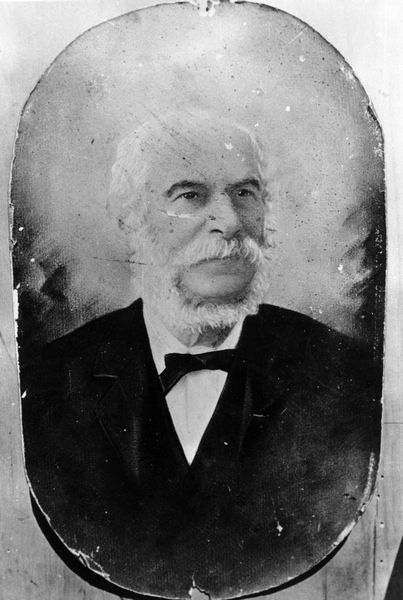
Colombo Road
The area to the east of Colombo Road between Johnstone Street and the Waipoua River formed part of the original holdings of the Masterton identity George Woodroofe. Woodroofe, who was a lapidarian in his native Ireland, was a successful cabinetmaker and farmer in his adopted country. He was active in public affairs in Masterton and achieved a degree of local fame for his fountain.
A keen prohibitionist, he conceived a plan to stop the town’s citizens from drinking in the public houses. He thought that if the local men were provided with a free supply of drinking water they would be more easily able to resist the temptation of alcohol. His vision slowly took shape in concrete, but Woodroofe’s plan to have the fountain paid for by public subscription was not successful as there was a marked reluctance to participate.
As Woodroofe’s fountain was taking shape on the site next to the Post Office the publicans built their own, simpler fountain, directly across the road, complete with iron cups, a small trough for dogs, and a larger trough for horses. Woodroofe’s fountain was finally paid off with hard fought for donations, and a subsidy from the Masterton Trust Lands Trust. The great day arrived when Mayor Pownall arrived to christen the fountain, and to prime the pump to make the water flow forth. Unfortunately the water stayed obstinately in the ground, the well not having been dug deeply enough. Woodroofe’s enthusiasm for the project seemed to die with the disappointment, and the old fountain was left, useless, until the concrete weathered so much the structure was removed.
George Woodroofe was obviously a shy man. When the Masterton Borough Council street-naming meeting was held in 1878 he moved that the street to be named in his honour should be re-named Columba Road. His suggestion was acceded to and the street was named after the Scottish saint. It is ironical then that a large subdivision, land once owned by Woodroofe, should end up being named after his son-in-law.
Pic: George Woodroofe did not want a street named after him.
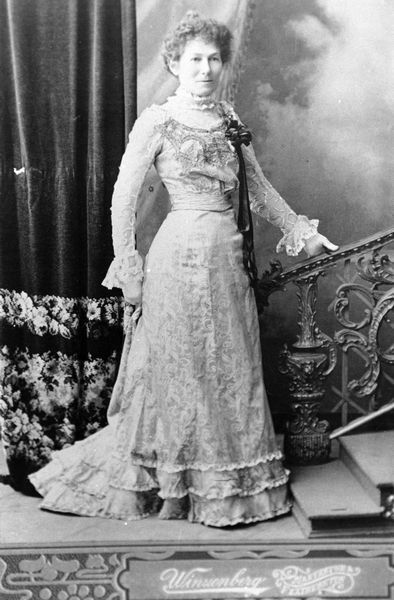
Cameron Crescent
In 1886 George Woodroofe’s second daughter Robina married D.J. Cameron, the son of Donald Cameron, and stepson of Masterton mayor William Lowes. The Cameron family came to New Zealand from the Highlands on the ‘Blenheim’ in the 1840s. A number of Cameron brothers took up land at the Pahaoa in 1845, where the family eventually developed extensive holdings. Donald John was born in Kaiwharawhara in 1858, and developed his farming skills on the family’s Pahaoa property. He was later active in farming a number of properties in and around Masterton. His knowledge of land values made him a valuable advisor to the government when they bought some large blocks of farmland for subdivision into smaller farms.
Norman Cameron, Donald and Robina’s only son, served as a commissioned officer in the New Zealand Army at Gallipoli where he lost his life. Donald, and his brother Robert, helped buy 14 acres of the old Showgrounds in Dixon Street, and presented them to the town as a memorial to their son and nephew, and to all fallen soldiers.
At a meeting of the Masterton Borough Council in May 1958 it was decided to affix Scottish names to the area of land known then as the Cameron block. The land, some of which had been used for the Riverside Golf Course, was laid out in 300 housing allotments. The first of these Scottish names was given to Cameron Crescent.
Pic: Robina Cameron was George Woodroofe's daughter.
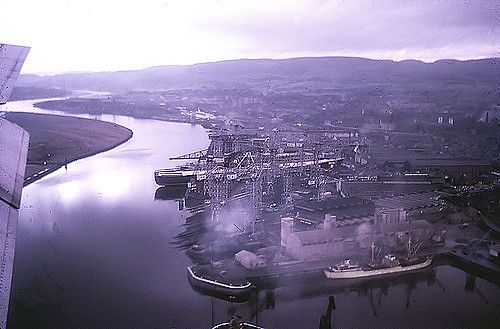
Clyde Street and Dee Street
Clyde Street is named after the river that flows through Glasgow and through the most important industrial area of Scotland. The Clyde rises in Strathclyde and flows down to the Firth of Clyde, a large estuary, where it is eventually 60 km wide. The valley of the Clyde, sometimes called Clydesdale, was famous for the production of the draft horses that bear its name.
Dee Street is named after the Dee, a famous salmon river which rises in the highlands, and flows 145 km to the sea at Aberdeen. Although the headwaters rise in particularly picturesque heather-clad lands, the river flows through substantial agricultural lands.
Pic: View of the River Clyde with the QE2 under construction.
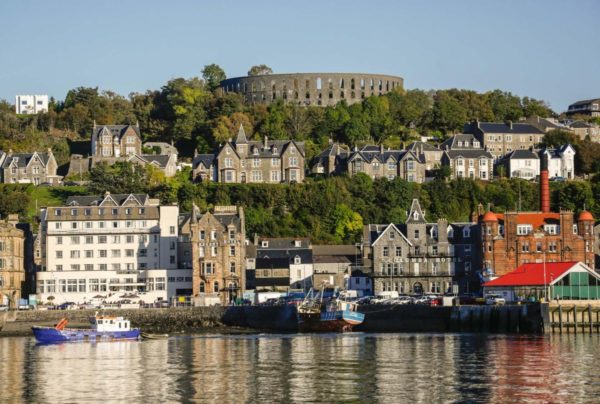
Tay Street and Oban Place
The Tay, which at 192 kms in length is Scotland’s longest river, is commemorated in Tay Place. Another noted salmon river, it meets the sea at Dundee, where it is crossed by the famous Tay Bridge.
Oban Place is named after a relatively small port in Strathclyde. The town of about 900 people is best known as a tourist destination, as ferries for the Hebrides leave from the port. Its major industries, besides tourism, are fishing and textiles
Pic: Oban is Gaelic for 'little bay' - it is sometimes called the 'Gateway to the Isles'.
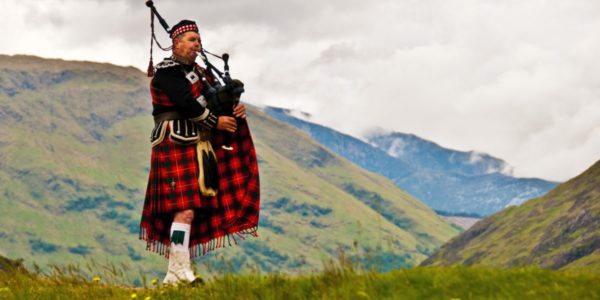
Grant Crescent and Stuart Crescent
Two streets have been named after famous Scottish families – Grant and Stuart Crescents. The Grants are a widespread family, although they seem to trace their ancestry back to a Norman invader as the name does not appear in Scotland until the 13th century. The Stuarts are an even more ancient family, taking their name from their stewardship of the lands of the lords of Brittany. They were the Royal family of Scotland from 14th century, and took the English throne in the 17th century. Although the Stuarts were displaced from the British throne their blood flows in many European royal families.
Pic: Highland piper - courtesy SGM Canada





